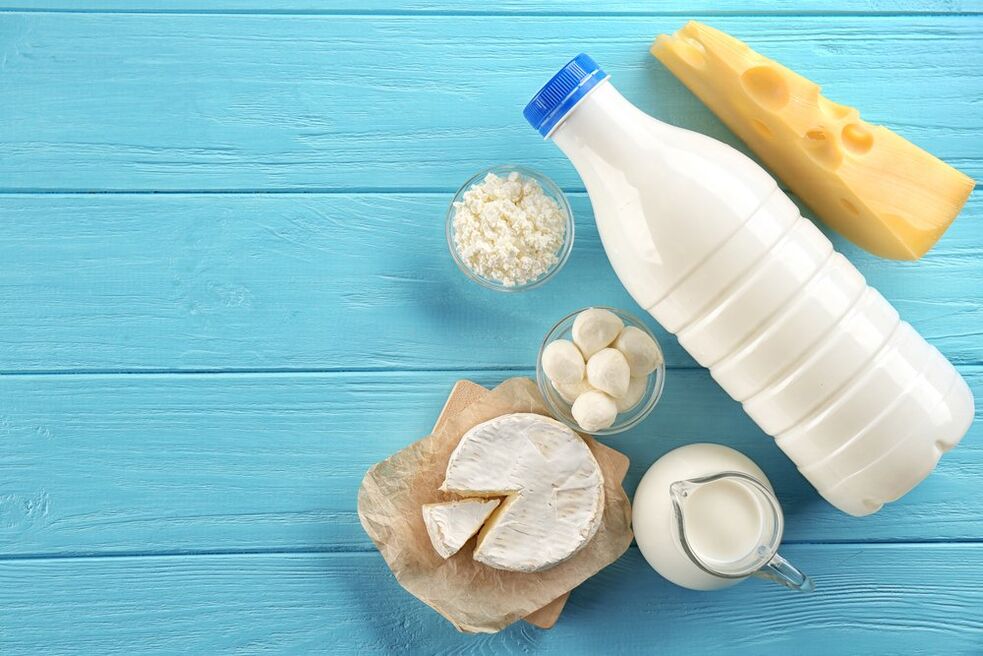Food allergies are a fairly common phenomenon in the modern world. It is manifested by swelling of the mucous membranes, rash, urticaria, swelling of the skin. In addition, the general condition of a person deteriorates after contact with an allergenic substance. Hypoallergenic nutrition contributes to maintaining normal health and does not provoke allergic attacks, which is also effective in the fight against excess weight, if any.
Hypoallergenic Diet: The Basics of Nutrition

In childhood, allergies are most common to foods such as chicken eggs (egg yolks), whole cow's milk, walnuts, peanuts, fish and seafood, and wheat (specifically, the gluten it contains). In adulthood, food allergies are most common to peanuts, seafood, chocolate, and honey. If you have a food allergy, you need to carefully study the composition of the dishes and adjust your menu. It's especially important to review your meal plan if you're having an allergy episode, a rash, swelling, or other signs. Often just a change in diet can significantly improve health.
The main task of a hypoallergenic diet for food allergies is to quickly restore the productive work of the stomach and normalize the intestinal microflora. Thick creamy vegetable soups and liquid milk soups, as well as various vegetable purees, can contribute to this. But soups prepared on the basis of concentrated fish and meat broths should not be eaten during the diet.
Eating a hypoallergenic diet is recommended five times a day. This means that the total amount of food should be divided into three main meals and two snacks. Most people do not experience any discomfort with this diet, such as with a strict diet.
A hypoallergenic diet helps the body recover more quickly from the stress caused by an allergy attack. It is very important not to break the diet even after the external signs of allergy have disappeared, allowing the body to recover and cope with the allergen.
It is recommended to follow a diet and consume mainly hypoallergenic products for a long time. Such a diet can last from 2-3 weeks to 4-6 months. Any serious case of food allergy requires consultation with a doctor who will provide specific recommendations on what to eat and what to avoid.
Hypoallergenic diet: foods forbidden to eat
The main goal of the diet is to detoxify the body and then improve the functioning of the digestive tract. The selection of products should be made taking into account their classification into three main groups: hypoallergenic, moderately allergenic and highly allergenic. It should be used exclusively hypoallergenic, and moderately allergenic should be limited in quantity. Highly allergenic foods should, of course, be completely excluded from the menu. A hypoallergenic diet, the products of which are allowed on the menu, is well tolerated and sufficiently saturates the body with all the necessary vitamins.
Therefore, for the duration of the diet, you need to exclude from the menu products that pose an allergic threat. These include:
- fish caviar;
- Sausages - boiled, smoked, dried;
- all hard cheeses;
- smoked meat;
- Honey;
- colorful fruits and vegetables (red, orange, yellow, crimson);
- any preservation;
- citrus fruits.
In addition, it is forbidden to drink a variety of sweets, confectionery, cocoa, chocolate and alcohol. Walnuts are also prohibited from consumption as they are among the most allergenic foods. This has been confirmed by experts from the University of Porto (Portugal). Symptoms of walnut allergy are usually quite severe and anaphylaxis is very likely to develop, which if left untreated is often fatal.
Foods that belong to the group of moderate allergens should be consumed with caution in limited quantities and only after consulting a doctor. These products include:
- corn flour and products made therefrom;
- cranberries and blueberries;
- wheat groats and porridge thereof;
- Legumes;
- Fatty Meat;
- fatty fish;
- bananas, both fresh and dried;
- apricots and peaches.
Fruit and black tea as well as herbal decoctions should be used with caution.
What can you eat on a hypoallergenic diet?

The use of approved products will help eliminate all manifestations of allergies as quickly as possible. These products include:
- homemade yoghurt made from fresh milk without additives;
- medium-fat kefir;
- sweet cherries of lighter varieties, pears;
- cottage cheese of any fat content;
- buckwheat;
- Semolina;
- Rice;
- lean fish and lean meat;
- Oatmeal;
- pearl barley;
- any dried fruit.
It is also allowed to eat green vegetables, namely cucumbers, zucchini, peppers, light yellow or green apples, low-fat pastries without yeast, biscuits and cereals with milk, as well as cauliflower, which is rich in fiber, which is very good for health. According to research by the Department of Food Engineering, Faculty of Engineering, Ege University in Izmir (Turkey), dietary fiber feeds healthy bacteria in the gut, helping to reduce inflammation in the gut and normalize digestion.
As part of a hypoallergenic diet, it is quite possible to follow a kefir or buckwheat diet for weight loss, as well as protein diets, only eggs and poultry meat should be replaced with veal and cottage cheese. The most accurate recommendations on nutrition, a list of allowed and forbidden foods, should be given by a doctor, namely an allergist.
Example of a hypoallergenic diet menu: lose weight
In general, the menu of this diet consists of simple recipes for preparing healthy meals. The main methods of cooking are baking in the oven or in the microwave, boiling and steaming. The menu could look like this:
- for breakfast, eat buckwheat porridge boiled in water and seasoned with 1/2 teaspoon of butter, cottage cheese casserole, tea with or without sugar (to taste);
- two baked apples are a good first snack;
- for lunch, an excellent option would be mashed vegetables soup with carrots, cauliflower and potatoes, steamed beef meatballs, uzvar;
- For a second snack, stock up on plain yoghurt and a banana.
- For example, dinner includes porridge, millet, a portion of vegetable stew, and a steam-protein omelette with tea.
If hunger suddenly makes you unable to sleep, you can sit down with another baked apple. The extra fiber won't hurt, it acts as a prebiotic, helping the beneficial bacteria in the gut to actively multiply. This has been demonstrated by research conducted by the Nutrition and Nutrigenomics Group, Department of Quality and Nutrition, Center for Research and Innovation, Fondazione Edmund Mach, San Michele all'Adige, Trento (Italy).
The menu above can be used to normalize the condition after an episode of allergy in both adults and children. In addition, it is suitable for pregnant and lactating women and the elderly.













































































